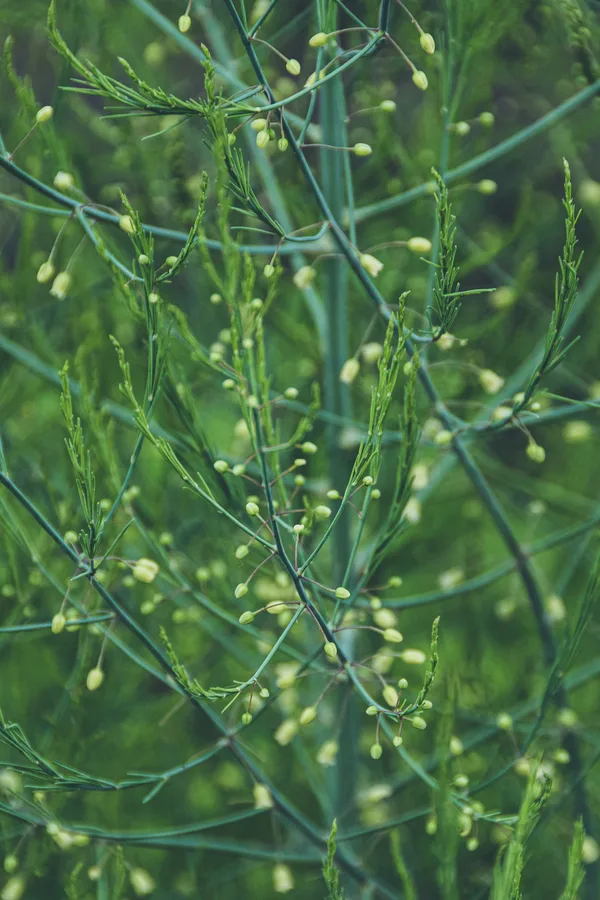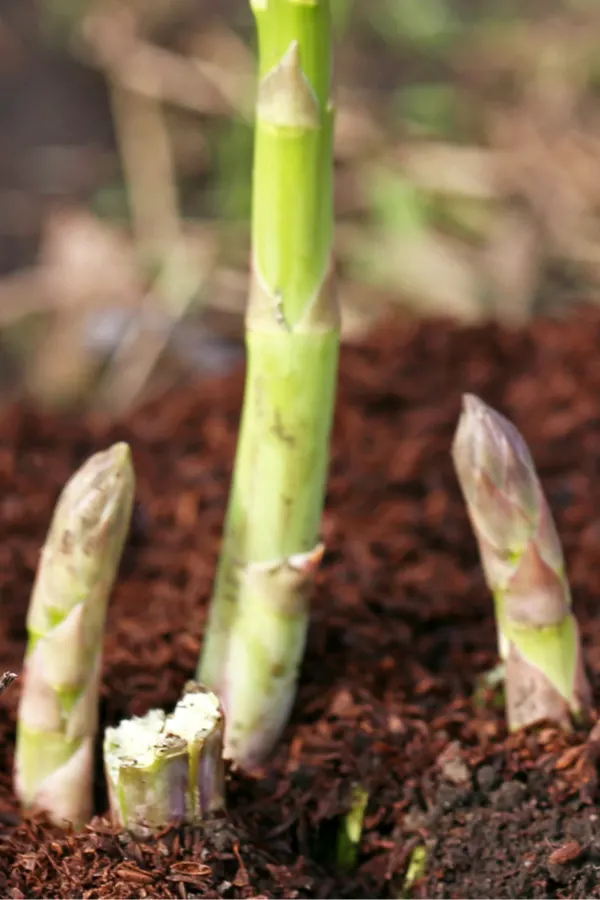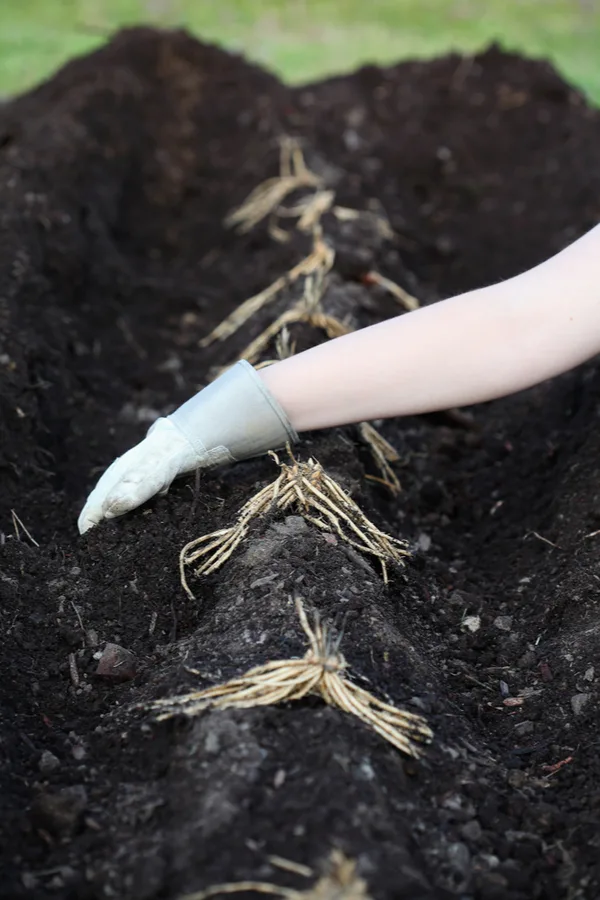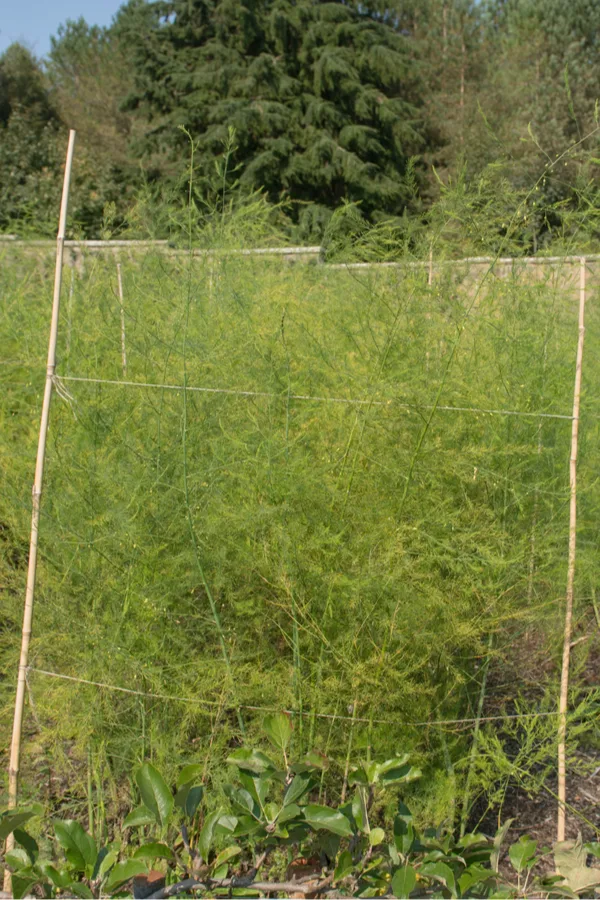Did you know that how you care for your asparagus plants in the summer can have a big impact on their health? And even more – on the size and quality of next year’s spears?
So much is made about growing asparagus that sometime caring for plants after the harvest is overlooked. In fact, in many cases, gardeners aren’t exactly sure when they should stop harvesting their asparagus crop in the first place!
The funny thing is, when you stop harvesting and how you treat plants afterwards are both actually extremely important to the your asparagus crop’s long-term health. Especially when it comes to their vitality and production levels the following year.

Here is a look at how to know when to stop harvesting your asparagus, and how to care for your plants in the summer and fall.
How To Care For Asparagus In The Summer After Harvesting
One of the biggest keys to growing asparagus successfully is knowing when to stop harvesting. When asparagus is harvested too late into the season, plants are unable to build up power for the following year.
Asparagus plants need time to grow and mature to full size. This allows the process of photosynthesis to reach it’s full potential. As the plants develop their foliage and stems, the plants absorbs energy. And that energy is then stored to produce next season’s spears.
When Do I Stop Harvesting? Summer Care For Asparagus Plants
How long your asparagus plants will produce viable spears depends on a few key factors. For one, older and more established plants will produce for a longer period of time. Especially if they are healthy and have been well cared for the previous season.
For just planted and one year old asparagus, no harvesting should occur at all. Simply allow the plants to grow and send all of their resources to building strong roots. ( See : How To Plant Asparagus)

For younger plants that have been growing from two to four years, plants will usually produce good spears for a solid two to three week period. More established plants can produce for as many as six to eight weeks.
So how do you know exactly when to stop harvesting? The age guidelines above are certainly a good starting point, but in general, you should stop harvesting when growing slows, and the new spears shooting up are less than the diameter of a standard pencil.
For most asparagus crops, harvesting will stop by early to mid-June. Remember again, older plants may continue on for a bit longer.
Summer Care For Asparagus Plants – Fertilizing
Once you have stopped harvesting, it is time to let the plants grow as big as they can. The bigger the stems and foliage on top, the more power the plant can harness for next year’s spears.

One of the best ways to promote strong summer and fall foliage growth is by fertilizing as soon as you stop harvesting. Asparagus plants use a lot of energy from the soil producing their spring spears. But by re-energizing the soil with nutrients, the plants can quickly recover.
There are two great methods for powering your crop, top-dressing with compost and adding a balanced all-purpose fertilizer. When used together, they are extremely effective at producing great summer growth.
Top Dressing
Adding a top dressing of compost after the harvest is one of the best ways to recharge the soil. Compost is full of balanced nutrients. As it decomposes over the summer, the nutrients slowly feed the asparagus crowns.

A one to two inch topping of compost works wonder for plants. Simply spread the compost out on the surface of the soil, covering the area of the crowns.
Balanced Fertilizer
In addition to applying the top dressing of compost, giving the plants a balanced organic fertilizer adds extra power for growth. Look for fertilizers in the 5-5-5 to 10-10-10 range for best results. Product Link : Jobes Organics Plant Food
Supporting The Crop – Asparagus Plants In The Summer & Fall
Asparagus will grow quite large as it matures. In fact, it can grow upwards of 6 feet tall or more. Because of this, adding some type of supports for the plants can help immensely.
Without any support, stems can easily snap and break from the plant. Not only does it leave less foliage mass to absorb nutrients, it also makes the plant expend energy on healing the damage.

Support for the crop can come in several ways and doesn’t need to be costly or intricate. A few stakes with jute rope or string running between them can be more than enough to keep the large fern-like plants upright and secure.
Fall Care – Asparagus Plants In The Summer & Fall
Once a few frosts or a hard freeze occurs, asparagus will die off. At this point, it is best to cut the plants back to the soil line. Keeping plants around through the winter months can encourage both disease and pests – both unwelcome guests for next year’s harvest.
Once plants have been cut back, mulch the top of the plants with a few inches of straw or shredded leaves. Mulching before winter is important for several reasons.
For one, it helps to prevent weeds. And there is nothing more disruptive to the growth of asparagus than having to compete with weeds for nutrients and water.

In addition to preventing weeds, mulch also protects the crowns through the winter from excessive thawing and freezing, all while holding moisture in to the roots.
Once your plants have been put to bed, all that is left is to wait until next spring to enjoy the fruits of your labor. Here is to caring for your asparagus plants in the summer and fall for a great crop next year!
This Is My Garden is a website dedicated to spreading the love and knowledge of gardening around the world. We publish two new garden articles each week. This article may contain affiliate links.
